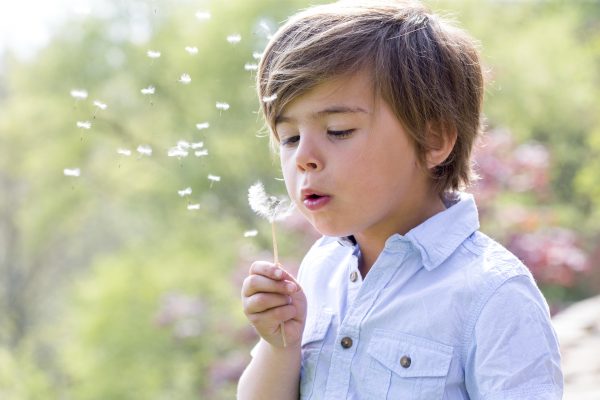Mindfulness – I’ve heard of that!

Close up shot of a little boy blowing dandelion seeds away with his eyes closed.
It seems most people have heard about mindfulness these days. And, increasingly, it’s being taught in schools. But do you know what this practice really is, whether your children are practising it at school, and how you could use it together at home?
What is mindfulness?
Mindfulness is present moment, non-judgemental awareness. This means bringing your full and undivided attention to the present moment, and doing so with an attitude of acceptance in a non-judgemental way. Sounds easy? Maybe not? Like learning any new skill, practice is the key!
How do you practise mindfulness?
Mindful awareness can be practised in various formal and informal ways.
Formal mindful awareness practices include forms of sitting, lying and movement activities with a focus on the breath as an anchor. As you begin formal practice, you may notice all sorts of thoughts arising – This is hard, I feel irritated, I am doing this wrong… Or, you might find yourself thinking about what you have on your to-do list for the day. Or about how your mind darts around aimlessly. Don’t be concerned; this is a common and perfectly normal experience.
Here’s the important bit. As you practice mindful awareness, simply notice your thoughts. You don’t have to try to stop them or judge them. Just notice them. And instead of getting wrapped up in them or letting them carry you away, let them go. By practicing mindful awareness regularly, you can develop, over time, the capacity to recognise these thoughts and feelings without attaching to them. In this way, you gain control over them and they no longer control you.
Informal mindful practice involves simply noticing what is happening at any point in time – once again, in a non-judgemental way. This is an effective way to help you refocus.
Why teach mindfulness in schools?
Parents want many things for their children. The list usually goes something like: to be happy and healthy, to be a good person, to get an excellent education…
In 1950, William James, the father of Psychology, noted: “The faculty of voluntarily bringing back a wandering attention, over and over again, is the very root of judgment, character and will… An education which should improve this faculty would be the education par excellence.” (James, 1950) This faculty is mindfulness!
The good news is that evidence-based mindfulness programs are now being introduced into schools from ELC to VCE.
What are the benefits of mindfulness approaches for children and adolescents?
Much research has been done on the benefits of adults practising mindfulness, indicating that it results in a number of positive effects. Although it is still early days in regards to research into mindfulness-based approaches with children and adolescents, the findings are extremely encouraging. They indicate that children and adolescents who practise mindfulness show:
- increased attention span and better focus
- better emotional regulation
- greater insight (self-knowledge, awareness)
- improved relationships and attunement with others
- greater empathy
- reduced stress
- greater impulse control (the capacity to pause before taking action, being able to consider a range of responses and choose among them)
- increased ability to calm and soothe oneself
- greater awareness of bodily physical sensations
- increased kindness and compassion
- academic improvement.
As Master Turtle said to Po in Kung Fu Panda:
Yesterday is history
Tomorrow is a mystery
Today is a gift
That’s why it is called “the present”
If you know your child’s school is offering mindfulness, find out how they are practising, and do some of the practices at home with your child. There is no shortage of resources available, for example see: https://www.smilingmind.com.au/ or www.gonoodle.com or simply google ‘mindfulness for children’ and you will see the list is never ending. Even explore Mindfulness programs for yourself…
Finally, a parent testimonial
I had to call to inform you that I was on the phone to a friend and we were having a conversation that I was obviously finding stressful. My son, who is in Year 5, could hear my end of the conversation. At the end of the call, he said, “Mum, I can help you calm down.” He then proceeded to sit me down and talk me through a brief mindfulness script that they do every day at his school. He told me it helps him to calm down. I’m so pleased that he is learning these practices at school they are skills for life … and he’s teaching me!
Brought to you by Brighton Grammar School
Kay Rogers is a clinical psychologist and Director of Mindfulness at Brighton Grammar, an all-boys school in Melbourne. This article is about EducationSubscribe to Understanding Boys. It’s free!
Got boys? Sign up for tips and advice you'll actually use.
